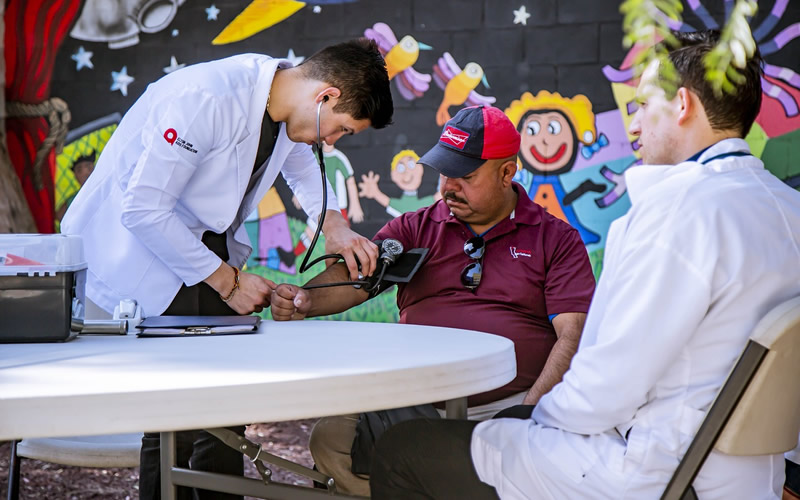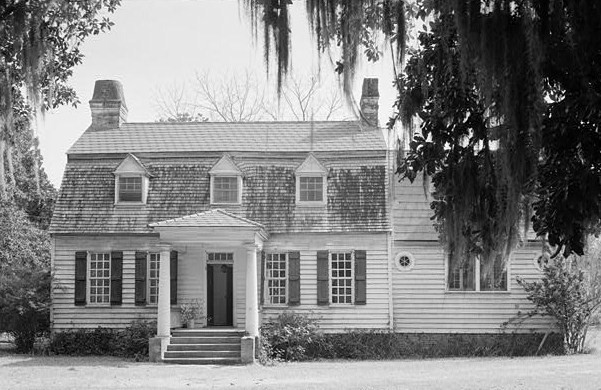INSIDE ISSUE 18.46 | Nov. 15, 2019
 BIG STORY: Education overhaul to hit Senate floor early in 2020
BIG STORY: Education overhaul to hit Senate floor early in 2020
NEWS BRIEFS: S.C. still awaits approval of Medicaid work requirements; more
COMMENTARY, Brack: Put extra state revenue to good uses
SPOTLIGHT: Conservation Voters of South Carolina
MY TURN, Campbell: Investing in prevention is investing in S.C.’s future
FEEDBACK: Send us your thoughts
MYSTERY PHOTO: Not a subdivision house
S.C. ENCYCLOPEDIA: Promised Land
Education overhaul to hit Senate floor early in 2020

By Lindsay Street, Statehouse correspondent | The state’s first major education bill in decades is getting closer to the Senate floor, teeing it up for debate prior to the General Assembly’s slog as the two-year session ends in May, a key lawmaker says.
“It’ll be right across the desk on the first day with a favorable report,” Senate Education Chair Greg Hembree, R-Horry, told Statehouse Report. The session begins Jan. 14. Between now and the middle of December, Hembree said his committee will meet several times before voting it to the floor for debate.
The meandering and expansive package addresses a wide range of issues including bumping the starting pay of teachers, addressing how the state intervenes in failing schools, changing the state’s literacy program and more. In 2019, House and Senate leaders introduced the bill, which was quickly passed in the House.

In the upper chamber, Hembree and a bipartisan panel have pored over the package for 10 months with 20 public meetings.
“This is not a magic solution to the problems we have in education in South Carolina but steps in the right direction,” S.C. Sen. Vincent Sheheen, D-Camden, said during Wednesday’s meeting.
Hembree said the bill “incrementally” moves education forward.
Doubts remain for education advocates
But some education advocates remain skeptical.
“It’s not the sweeping reform they want to act like this is going to change the South Carolina school system. It’s a step forward, though, because we haven’t talked education in 40 years,” South Carolina Education Association President Sherry East said, adding she worried it could lessen the appetite for further change in the Statehouse.
Another advocate worries it does too much in the wrong direction.
“We see a lot of paths toward privatization and a lot of paths that turn kids into widgets and we don’t see a lot of much else,” SCforEd board member Nicole Walker said. “I do not have a lot of faith that it is salvageable (through debate on the Senate floor). I have seen so few indicators that educators are being valued.”
East and Walker agreed the bill had a few bright points, however. That includes bumping the base starting teacher pay from $32,000 to $35,000, mandating a 30-minute duty-free break for elementary school teachers, and changes to the state’s literacy program that provides early interventions for students. Some, but not enough tests have been tossed from the state’s mandates, they said.
East and Walker said the bill fell short on addressing class sizes in the state — a perennial top complaint among teachers, even trumping salary. East said the bill will also do little to address the current teacher retention and recruitment issues.
“It’s not really going to help out attracting and retaining teachers in the classroom,” East said.
She also expressed concern over the push for expanding non-certified teachers through the bill — a move aimed at bringing more people into the classrooms. She said teacher-specific certifications and training are necessary for students to learn effectively.
Walker said she didn’t like that the Senate version of the bill removed a teacher bill of rights and a student bill of rights. The House finalized its version with the teacher bill of rights intact.
“Those two things should function as that reciprocal agreement of what students can expect and a teacher can expect. This should be the bedrock of how you build that community,” she said.
Paring down the big bill
Hembree tried this week to get ahead of naysayers about the bill. During a meeting of the full committee, he said everyone would find something they would hate, but most would find they could agree with 80 percent or more of the bill.
“If you’re waiting for perfect, we aren’t going to do anything,” he said.
Hembree said his committee pared down the bill from 85 pages to 63 pages, mostly through removing duplicative ethics requirements that the panel felt was already covered by state law.
The panel also removed the Zero to Twenty committee, which sought to track children from birth to their early careers in the state.
“The last thing we need in state government is another committee, I can assure you,” Hembree said, adding that the work needed there could be covered by other entities.
Much of the concluding work by the committee has been on the procedure of what happens and when the state should intervene in a failing school district (and what the definition of a failing school district is). Under a Wednesday subcommittee amendment, school district takeovers would last six years, remove school board members from state-run districts and lay out how locals could regain control. The state has taken over three districts since 2017.
What’s next
 Hembree has tasked a special study subcommittee to begin reviewing the way the state funds education in an effort to streamline and modify it. The last major change was with Act 388 earlier this century, which gave property tax relief to homeowners but meant local school dollars were raised through business and rental properties.
Hembree has tasked a special study subcommittee to begin reviewing the way the state funds education in an effort to streamline and modify it. The last major change was with Act 388 earlier this century, which gave property tax relief to homeowners but meant local school dollars were raised through business and rental properties.
The committee will look at tweaking the current formula of how the state distributes money to the districts.
“(Changes to the funding formula is) not going to go out this session,” Hembree said. “That’s another boulder we are trying to move.”
Teacher pay raises will also be a part of the conversation in Columbia in 2020 — though not likely in this bill. Like this year’s teacher raise, it will likely come through the state budget-writing process. On Wednesday, State Education Superintendent Molly Spearman told reporters she has requested a 5 percent pay raise for teachers in next year’s budget.
East said her group will push for standalone legislation on other key issues for the end of session. She said that in December, the Center for Educator Recruitment, Retention & Advancement will release its annual numbers of the state’s teacher shortage and that will likely spur more legislative action.
“That will be another big eye opener,” she said.
Hembree said his committee plans to work on other education bills through the session.
“The committee is not going to quit its work; we’ve got a lot to do,” he said. “You don’t quit education reform. You don’t stop … We will stay working on different pieces and parts of the system forever.”
As of publication, a date for the next meeting of the Senate Education Committee has not been released.
- Have a comment? Send to: feedback@statehousereport.com
NEWS BRIEFS
S.C. still awaits approval of Medicaid work requirements

By Lindsay Street, Statehouse correspondent | The state continues its wait for whether it can require work for South Carolinians to receive Medicaid benefits, despite a bumpy road forward paved by other Republican states.
Sixteen states have either implemented or sought the waiver that allows them to enact a work requirement for those seeking federally-subsidized health insurance, according to Kaiser Family Foundation. But New Hampshire, Kentucky and Arkansas have seen their waivers set aside by federal court decisions. Both Arizona and Indiana delayed implementation of their work requirements. South Carolina is one of eight states pending federal approval.
S.C. Department of Health and Human Services (SCDHHS) public information director Colleen Mullis this week said the department negotiating with the federal government on its waiver proposal, which would mandate recipients of Medicaid work at least 80 hours per month. Low-income earner advocates have said work requirements could have a negative impact on those caring for others. SCDHHS has responded that working could have a positive impact on the health of recipients. Read more.
In other recent news:
![]() South Carolina has worst roads in the nation. Just two years after state lawmakers finally agreed to phase in a gas tax increase, the state’s roads are still in shambles, according to a survey from Consumer Affairs. The survey ranked the state as having the worst roads in the nation. Read more.
South Carolina has worst roads in the nation. Just two years after state lawmakers finally agreed to phase in a gas tax increase, the state’s roads are still in shambles, according to a survey from Consumer Affairs. The survey ranked the state as having the worst roads in the nation. Read more.
FBI report shows increase in hate crimes in S.C. In 2018, South Carolina law enforcement agencies reported 111 hate crimes — a big jump from the 87 reported in 2017. Most of the hate crimes were based on race, according to the statistics. See the data here.
Check coming? Check here. The S.C. Department of Revenue is offering a way to check on whether you will receive a $50 rebate check. Click here. In related news, Gov. Henry McMaster signaled this week he would push for an income tax cut in the state in light of a projected $1.8 billion boost in state revenues. Read more.
S.C. federal lawmakers spar over opportunity zones. U.S. Sen. Tim Scott, R-South Carolina — author of federal opportunity zone legislation — and U.S. Rep. Jim Clyburn, D-South Carolina, are not seeing eye-to-eye on the tax incentive for investment in so-called blighted areas. Clyburn has introduced a bill to “fix” problems with the tax incentive, but Scott said that will undo the program’s positive impact. Read more.
Senate panel meets on juvenile justice. The Senate Select Committee on Raise the Age will meet noon Nov. 19 in room 308 of the Gressette building on the Statehouse grounds. The panel has been meeting about reforms to the juvenile justice system in South Carolina.
Legislature, citizens examine judicial merits Nov. 18-20. State lawmakers and citizens are reviewing judicial merits of state judges and nominees next week. Check out the many meetings here. d
- Have a comment? Send to: feedback@statehousereport.com
Put extra state revenue to good uses

By Andy Brack, editor and publisher | More likely than not, the good times won’t keep being good. At some point — and probably sooner than you think — the country will slip into another recession.
 With an unbudgeted $1.8 billion money for the 2020-21 budget to be spent, let’s be ready for what’s coming by investing to reduce future impacts on institutions and people. Alternatively, we can follow past roller-coaster budgeting and spend fecklessly when times are lush, but cutting to the bone when times are bad.
With an unbudgeted $1.8 billion money for the 2020-21 budget to be spent, let’s be ready for what’s coming by investing to reduce future impacts on institutions and people. Alternatively, we can follow past roller-coaster budgeting and spend fecklessly when times are lush, but cutting to the bone when times are bad.
A year ago, state lawmakers prepared for a session that was to have $1 billion in extra funds. They generally spent it in good places: more pay for teachers, a freeze on college tuition, health care for the poor, reducing future pension liabilities and more.
Now is the time for legislators to make more investments, particularly in people — state employees and teachers — and infrastructure, long ignored and in need of maintenance. It is not the time to start a lot of new programs that will have to be cut when the wheel of fortune reverses.
South Carolina needs to be strategic in spending this good fortune, not create a political slush fund that ignores the reasons we’re at the bottom in public education and have half of our people not earning a living wage. So here are ways to spend almost $2 billion without creating future problems that will have to be cut when times become bleak.
New, recurring money: $815 million
Just under half of the money coming in will keep coming in every year due to growth. This pool is best spent on things that will need to be paid for each year.
Teachers. Lawmakers gave a good pay raise to the state’s teachers this year, but raised them to about the southeastern average. Let’s do better than that by spending another $200 million on teachers, particularly in raising starting salaries.
State employees. If we’re going to give teachers a raise, spend $80 million to honor the service of state employees and pay them what they’re worth. Another $30 million should boost pay more for law enforcement and corrections officers who are in harm’s way and traditionally underpaid.
Sales tax cut. Cutting the state’s high sales tax rate by a half-cent would cost about $300 million. That’s something that would help every South Carolinian throughout the year.
Pension liability. The state has a huge unfunded pension liability. Putting in another $100 million would reduce future burdens — particularly in lean years.
Health care. Lawmakers should invest a $100 million in recurring money to keep up with health care costs for the poorest of South Carolinians on Medicaid.
One-time money: $1 billion
![]() While recurring dollars generally should be used for people-related costs, one-time dollars best are spent on ignored problems, such as deferred maintenance on buildings and infrastructure. Some ideas to consider:
While recurring dollars generally should be used for people-related costs, one-time dollars best are spent on ignored problems, such as deferred maintenance on buildings and infrastructure. Some ideas to consider:
Buildings. A couple of years ago, colleges outlined $2.5 billion in building needs. They got some money, but dedicating $200 million to fixing buildings would help. Similarly, another $200 million could be used to maintain state buildings and provide assistance to poor, rural school districts that need better facilities.
Welcome centers. Look for a push by lawmakers to spend $150 million on completely revamping the state’s welcome centers, which currently may be better called Unwelcoming Centers.
College tuition. About $100 million would allow the state to continuing a freeze on in-state college tuition as well as significantly cut the cost of technical college tuition to new lows. A good strategy to reduce poverty is to invest more in education beyond high school.
Next recession. We need to set aside an extra $230 million in additional rainy-day savings or in a disaster recovery fund for the next unexpected whack, either from Mother Nature or the economy.
There’s a lot state lawmakers can do to prepare for lean times in the future. Spending it all on pet projects is not the way to go. But with this huge amount of extra money, there will be a lot of pressure to give back some to taxpayers. While we think a better idea is to invest, a rebate of $100 per taxpayer would cost the rest of the pot — about $120 million.
Andy Brack’s latest book, “We Can Do Better, South Carolina,” is now available in paperback and for Kindle via Amazon.
- Have a comment? Send to: feedback@statehousereport.com.
Conservation Voters of South Carolina
 The Conservation Voters of South Carolina is a statewide nonprofit organization that fights for the Palmetto State’s air, water, land and energy through political action. The organization is bipartisan, pragmatic and effective.
The Conservation Voters of South Carolina is a statewide nonprofit organization that fights for the Palmetto State’s air, water, land and energy through political action. The organization is bipartisan, pragmatic and effective.
Through scorecards and advocacy at the Statehouse, CVSC holds South Carolina legislators accountable for their votes and actions. As a small organization that operates as a nonprofit and has a political action committee, we have a big impact. Learn more today by clicking any of the links below:
- CVSC Legislative Scorecards
- CVSC Issues
- CVSC News
- How to take action with CVSC
Investing in prevention is investing in S.C.’s future

By Joy Campbell, special to Statehouse Report | In fiscal year 2020-21, the state of South Carolina expects to have a $2 billion surplus and our policymakers face political challenges in determining priorities for the use of those funds. Unfortunately, some issues and agencies often have a tough time gaining their attention.

The agencies that serve children don’t get what they need because they lack the powerful lobbying interests that others enjoy. Children don’t contribute to political coffers or go to the polls. Therefore advocates and social services agencies voices are drowned and children’s needs are subverted by the voices of well-funded special interest groups with powerful constituencies and capital to expend.
South Carolina has lingered at or near the bottom of national rankings on child well-being every year since the first Kids Count report was released in 1990. With the exception of a 71 percent drop in teen births that has saved our state an estimated $6 billion, no other indicator has seen a remarkable improvement. Yet, even after 30 years of data indicating our failure to address the needs of children, we continue to ignore the simple fact that we can’t continue to grow the economy of South Carolina without first breaking the cycle of poverty and preparing all children to be the workforce of tomorrow.
The Kids Count report addresses four key areas of concern and ranks each state accordingly. This is the current state of S.C.’s children:
ECONOMIC WELL BEING: Rank 48: children in poverty (245,000, or 23 percent); children whose parents lack secure employment (331,000 or 30 percent); children living in households with a high housing cost burden (308,000 or 28 percent); teens not in school and not working (19,000).
EDUCATION: Rank 42: Young children (ages 3 and 4) not in school (62,000, or 53 percent); fourth graders not proficient in reading (71 percent); eighth graders not proficient in math (74 percent).
HEALTH: Rank 38: Low birthweight babies (5,506, or 9.7 percent); children without health insurance (60,000, or 5 percent); child and teen deaths (391, or 33 percent); teens who abuse alcohol or drugs (15,000, 4 percent).
FAMILY AND COMMUNITY: Rank 37: children in single parent homes (417,000, or 40 percent); children in families where the household head lacks a high school diploma (18,000/ 11%); children living in high poverty areas (130,000, or 12 percent); and teen births (3,408 or a rate of 22 per 1,000).
Children living in poverty represent a significant portion of our future workforce. Healthy and adequately educated, these children within two to 16 years could all become healthy, productive citizens who will contribute to the state’s tax base and economic growth.
Furthermore, there’s a compelling residual benefit of investing now: children who see no hope for a prosperous future are much more likely to end up in the state Department of Juvenile Justice (DJJ), the S.C. Department of Corrections or addicted to drugs and/or alcohol. The need for state services would be decidedly reduced in the long run if we exercised foresight and implemented proven, effective prevention strategies to support children in staying healthy, getting through school and into self-sustaining careers. We can break the cycle of poverty now or it will continue to perpetuate.
This is an economic issue of gargantuan proportions that negatively impacts us all. Our state is one of the 10 poorest in the nation. Therefore, it would behoove cost-conscious, business-minded policymakers to pay attention to the voices who speak for kids. We can either heed their recommendations, invest now and reap the benefits or we will pay exponentially. When children don’t get what they need to help them succeed, our businesses, our state and taxpayers ultimately suffer the consequences. And the costs of ignoring the obvious are escalating every year that our leaders delay.
Joy Campbell of Columbia has served as a children’s advocate in nonprofit executive leadership for 27 years. She founded the S.C. Campaign to Prevent Teen Pregnancy that, with state support, has reduced teen birth rates by 71 percent.
Send us your thoughts … or rants
We love hearing from our readers and encourage you to share your opinions. But you’ve got to provide us with contact information so we can verify your letters. Letters to the editor are published weekly. We reserve the right to edit for length and clarity. Comments are limited to 250 words or less. Please include your name and contact information.
- Send your letters or comments to: feedback@statehousereport.com
Not a subdivision house

Here’s what this week’s mystery is not: A standard South Carolina subdivision house. But what and where is it? Share where you think it is by sending a guess to feedback@statehousereport.com. And don’t forget to include your name and the town in which you live.
Our previous Mystery Photo
 Our Nov. 8 image, “There’s probably a good story here,” does, as you would guess, have a good story. It’s the “Octagon House,” often considered the first concrete house in South Carolina. The house in Laurens was designed and built in 1859 by the Rev. Zelotes Lee Holmes, a Presbyterian minister and educator.
Our Nov. 8 image, “There’s probably a good story here,” does, as you would guess, have a good story. It’s the “Octagon House,” often considered the first concrete house in South Carolina. The house in Laurens was designed and built in 1859 by the Rev. Zelotes Lee Holmes, a Presbyterian minister and educator.
Congratulations to all of our steadfast reader-sleuths who sent in correct answers:
Jay Altman of Columbia; Charles Davis of Aiken; Randy Garrett of Laurens; Bill Segars of Hartsville; Philip Cromer of Beaufort; Henry Eldridge of Tega Cay; Tray Hunter of Bluffton; George Graf of Palmyra, Va.; Vic Carpenter of Lugoff; Jane Sosebee of Columbia; Daniel Prohaska of Mount Pleasant; Leslie Mullins and Tim Houghtalking, both of San Mateo, Fla.; Jacie Godfrey of Florence; and Penny Forrester of Tallahassee, Fla.
Segars added, The Octagon House is an amazing structure. Its construction practices were way ahead of its time for the upcountry of South Carolina. … Its walls were formed with wooden forms with a mixture of lime, sand and stone poured between these forms. Once this mixture hardened, the forms were removed and moved up to make the walls taller. Most of the walls are between 12- to 15-inches thick. It was placed on the National Register of Historic Places in 1973. Very few structural changes have been made to this house since its construction in 1859.”
Cromer shared more of the story: “The house has a ‘dungeon’ and also a tunnel that connected to the Laurens Mill. During the ‘Late Unpleasantness’ the mistress of the home hid the family treasure (silver, etc.) in the dungeon from Union soldiers plundering the area by placing floor boards over the entrance to the dungeon, covering it with a rug, and sitting in a chair on top of it while they searched the house. The unique shape of the house designed by Reverend Holmes was done by closing in the Cross of Christ with lines drawn from corner to corner of the crossed timbers giving it an eight-sided configuration.”
- Send us a mystery: If you have a photo that you believe will stump readers, send it along (but make sure to tell us what it is because it may stump us too!) Send to: feedback@statehousereport.com and mark it as a photo submission. Thanks.
S.C. ENCYCLOPEDIA
Promised Land
S.C. Encyclopedia | Located just off S.C. Highway 10 south of Greenwood, this rural African American community was created by freed slaves in the early 1870s. Before Promised Land, the 2,742-acre tract of land belonged to the estate of Samuel Marshall, a white plantation owner. Marshall’s heirs sold the land to the South Carolina Land Commission in 1869 at a rate of $10 per acre. The commission divided the property into fifty lots of approximately fifty acres each and then sold them to freed African Americans. Eleven families purchased lots in Promised Land in 1870; by 1872 some forty-eight families resided in the community. The name derived from their “promise” to pay the commission for the land. The sale of the Marshall property gave blacks in the upstate a rare opportunity to acquire land, which to most symbolized the essence of freedom in the post–Civil War years. Descendents of these original purchasers occupied the land continually throughout the twentieth century and into the twenty-first century.
![]() From its inception, residents of Promised Land exerted a significant influence over the political, economic, and social life of rural Abbeville and Greenwood Counties. During Reconstruction many of the men served as Republican Party officials. Seven Promised Land residents were delegates to a county Republican convention in 1872. Two men served on Abbeville County’s first integrated jury. Many of Promised Land’s residents shared family or kin ties, and few households were untouched by an overlapping network of in-laws and cousins. Churches provided the foundation for the community’s leadership. Leadership within the churches was carefully controlled from each generation within the same kin groups.
From its inception, residents of Promised Land exerted a significant influence over the political, economic, and social life of rural Abbeville and Greenwood Counties. During Reconstruction many of the men served as Republican Party officials. Seven Promised Land residents were delegates to a county Republican convention in 1872. Two men served on Abbeville County’s first integrated jury. Many of Promised Land’s residents shared family or kin ties, and few households were untouched by an overlapping network of in-laws and cousins. Churches provided the foundation for the community’s leadership. Leadership within the churches was carefully controlled from each generation within the same kin groups.
World War I, the boll weevil, and the Depression stimulated migration from Promised Land. Begun as a push by landless youths, migration was an outgrowth of community dynamics, peonage agriculture, and the maturation of blacks. The trend began to reverse itself by the end of the twentieth century, as new residents moved to the community. Many residents remained, however, tied to the land and community that had provided independence for hundreds of African Americans in the upstate for more than a century.
— Excerpted from an entry by Robert Ashton Cobb. This entry may not have been updated since 2006. To read more about this or 2,000 other entries about South Carolina, check out The South Carolina Encyclopedia, published in 2006 by USC Press. (Information used by permission.)
ABOUT STATEHOUSE REPORT
Statehouse Report, founded in 2001 as a weekly legislative forecast that informs readers about what is going to happen in South Carolina politics and policy, is provided to you at no charge every Friday.
Meet our team
- Editor and publisher: Andy Brack, 843.670.3996
- Statehouse correspondent: Lindsay Street
 Buy the book
Buy the book
Now you can get a copy of editor and publisher Andy Brack’s We Can Do Better, South Carolina! ($14.99) as a paperback or as a Kindle book ($7.99). . The book of essays offers incisive commentaries by editor and publisher Andy Brack on the American South, the common good, vexing problems for the Palmetto State and interesting South Carolina leaders.
More
-
- Mailing address: Send inquiries by mail to: 1316 Rutledge Ave., Charleston, SC 29403
- Subscriptions are free: Click to subscribe.
- We hope you’ll keep receiving the great news and information from Statehouse Report, but if you need to unsubscribe, go to the bottom of the weekly email issue and follow the instructions.
- © 2019, Statehouse Report, a publication of City Paper Publishing, LLC. All rights reserved.
- Read our sister publications: Charleston City Paper (every Wednesday) | Charleston Currents (every Monday)



Pingback: 11/15, full issue: Education reform, Spending $1.8 billion; Investing in kids – Statehouse Report – Stock Market Tamer